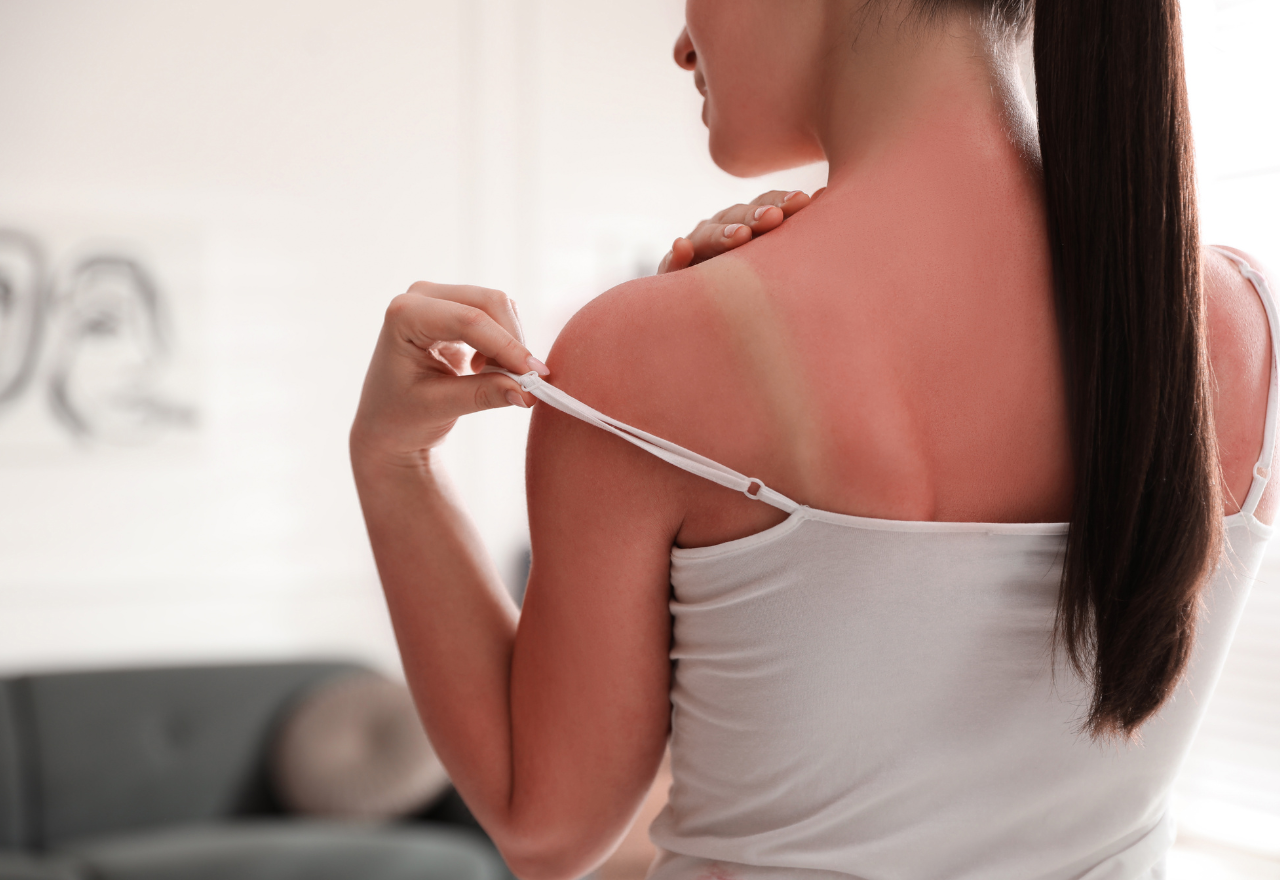Increase in NSW adults getting sunburnt; even in winter
11 July 2025, 9:05 PM
 1 in 4 18-24 year olds admit to being sunburnt in a four week period
1 in 4 18-24 year olds admit to being sunburnt in a four week periodPeople are being reminded to protect themselves from the sun even during winter, with a new report estimating that almost one million adults across the state were sunburnt at least once over a four-week period.
Cancer Institute NSW’s latest Sun Protection Behaviours Report, released today, shows 15 per cent of people surveyed reported being sunburnt, up from 12 per cent in the previous report.
The report found young people were more likely to be exposed to the sun and experience sunburn, with one in four 18-24-year-olds reporting a sunburn in a four-week period.
Young adults were also less likely to adopt sun protection behaviours such as wearing a hat and sunglasses.
Encouragingly, the report found more than 80 per cent of respondents used at least one form of sun protection, though only 35 per cent always or often used three or more. It also found exposure to the sun for more than 15 minutes when UV is at its highest reduced among NSW adults overall, from 46 to 41 per cent.
Ninety-five per cent of melanoma and 99 per cent of non-melanoma skin cancers are caused by overexposure to UV radiation from the sun and can be prevented with proper sun protection. The general rule is to protect your skin from the sun when the UV index is at three or above, which in NSW is most of the year, including in winter.
The Cancer Institute of NSW released a melanoma hotspot map in November 2024, revealing that the Lismore, Ballina, Byron, Clarence Valley, and Coffs Harbour local government areas (LGAs) have the state’s highest rates of melanoma.
The most effective defence against overexposure to UV radiation is to follow these five key steps:
- Slip on protective clothing
- Slop on SPF50+ sunscreen. Sunscreen should always be applied 20 minutes before heading outdoors and re-applied every two hours.
- Slap on a wide-brimmed hat
- Seek shade
- Slide on sunglasses
Other report insights
- Close to 50 per cent of young adults (aged 18 -24 years) reported higher levels of sun exposure, compared to 41 per cent in the overall population.
- Close to 26 per cent of young adults reported sunburn, compared to close to 15 per cent of the overall population.
- Almost 50 per cent of males were likely to report being exposed to the sun, compared to about 34 per cent of females.
- Participants from Sydney metropolitan local health districts (LHDs) were significantly less likely to report often or always being exposed to the sun compared to coastal and regional/rural LHDs.
- Shade is harder to come by, with a reduction in ease of finding shade down three per cent to 77 per cent.
The latest Sun Protection Behaviours Report analyses data from the 2022 NSW Health Population Health Survey, which asked about 13,000 people to report on their sun exposure, episodes of sunburn, adoption of the five sun protection behaviours and the ease of finding shade at public parks.
The Cancer Institute NSW has several initiatives in place to reduce the impact of skin cancer in NSW as part of its Skin Cancer Prevention Strategy 2023-2030.
More information on how to reduce your risk of skin cancer is available on the Cancer Institute NSW website.
Minister for Health Ryan Park said, “The release of the latest Sun Protection Behaviours Report is a good reminder, especially to the state’s young adults, to always take protective measures when outdoors.
“Being sun smart isn’t just for summertime. Skin damage is still a serious risk in winter, when you often don’t think about harmful UV because the weather is cooler.
“Australia has one of the highest skin cancer rates in the world, and we need to take the threat of skin cancer seriously and follow the simple, life-saving steps needed to reduce our risk of this deadly disease.”
NSW Chief Cancer Officer and Chief Executive Cancer Institute NSW, Professor Tracey O’Brien AM said, “Two out of three Australians will be treated for skin cancer in their lifetime and skin cancer is the most common cancer affecting young Australians, so it is worrying to see that an estimated one in four young people report getting sunburnt.
“I urge everyone to do the simple things like seeking shade when outdoors, wearing sunscreen, putting on a hat, sunglasses and protective clothing to safeguard themselves from the sun’s harmful UV radiation.
“In NSW, UV radiation levels are high 10 months of the year, so even in winter, adopting sun protection behaviours is essential, particularly at high altitudes and on reflective surfaces such as snow or ice.”
Grace Passfield, who was diagnosed with stage four melanoma in 2021 at age 33 said, “As a young mother with two small boys, being diagnosed with metastatic melanoma was a huge shock, it was my worst nightmare.
“As well as wearing sunscreen, hat and long-sleeve shirts, I encourage everyone to be aware of the UV each day and avoid being outdoors when it is really high. I think as a parent, it’s important to model our behaviours to our kids and to always wear sun protection, in the same way we insist they do.
“It’s also important that everyone knows their own skin and what’s normal for them and takes the time to get regular skin checks.”

